RingCentral works for many, yet growing teams still leave
RingCentral bundles calling, video, and messaging, scales worldwide, and integrates with big-name CRMs, so new adopters feel they are buying a future-proof platform.
Four issues make leaders hunt for a better fit
- Budgets spiral when add-ons pile up. Core plans start around $30–$45 per user, and extras like toll-free minutes or webinar licenses inflate monthly bills.
- Strict SMS caps limit outreach. Entry tiers allow as few as twenty-five texts per month, forcing teams to ration customer updates.
- Admins wrestle with a complex interface. Reviews cite a steep learning curve and frustrating call-transfer workflows.
- Major outages still happen. A North American incident on 22 January 2025 left thousands without voice service and highlighted support delays.
SuperU vs. RingCentral: the decisive shift from IVR to AI
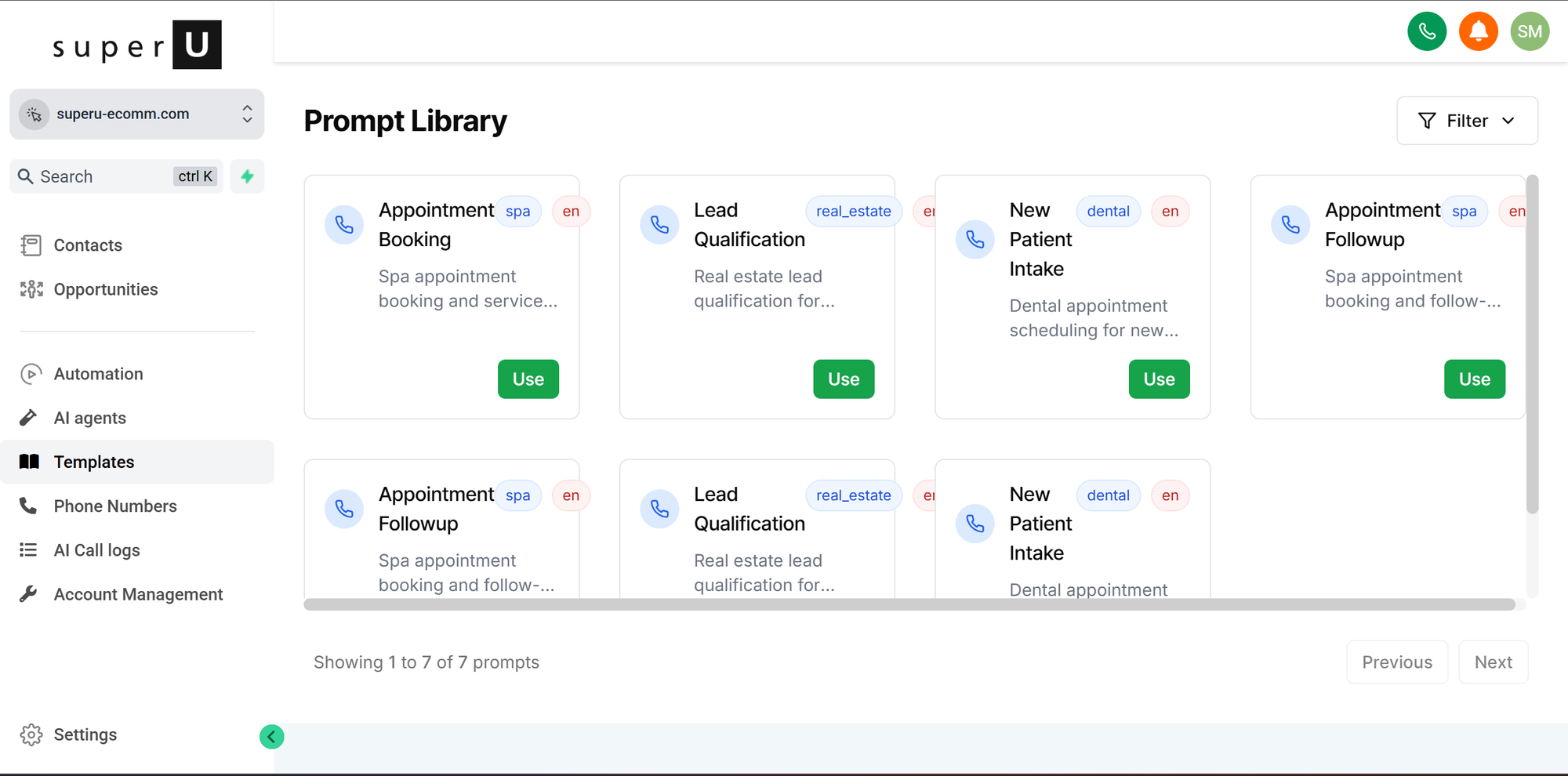
| Capability | RingCentral (legacy IVR) | SuperU AI Voice Agent |
|---|---|---|
| Caller experience | Push-button menus, zero personalisation | Natural conversation that understands intent |
| Speed to answer | Wait through greetings and options | Greets within one ring and resolves in a single exchange |
| Context memory | No history between calls | Remembers past orders, preferences, and frustrations |
| Setup effort | Build nested IVR trees manually | Upload FAQs; the agent trains itself in minutes |
| Cost predictability | Extra fees for advanced routing or analytics | Flat price that already includes sentiment analytics |
| 24/7 coverage | Adds head-count or pay-per-minute IVR charges | Always on, never tired, always polite |
Bottom line: AI voice agents handle requests in real language, slash abandonment, and feed managers precise transcripts ready for coaching and compliance. Businesses that replace old IVRs with SuperU report shorter queues, fewer misroutes, and happier callers in the very first week.
Seven Strong RingCentral Alternatives You Can Trust
Businesses looking for a reliable, easy-to-use phone system beyond RingCentral have several solid options. For companies prioritizing affordability, ease of use, simple texting, or responsive support, exploring alternatives is essential. Below, we dive into seven top contenders – Nextiva, Vonage, Ooma, Aircall, Dialpad, Grasshopper, and Zoom Phone – each with unique strengths, use cases, and pricing.
Nextiva: Best RingCentral Alternative for Unified Communications

Nextiva is a comprehensive unified communications platform that combines cloud phone service with video conferencing, team chat, and even customer experience management (UCXM) on one platform. It supports both inbound and outbound contact center features while providing a highly reliable infrastructure.
One of Nextiva’s standout qualities is its customer service – users consistently praise its 24/7 support and quick issue resolution. In fact, customers report that Nextiva’s live support and organized call handling make using the system very easy.
- Unified customer experience management: Nextiva’s AI-powered platform unifies all customer interactions (calls, live chat, SMS, email, social, etc.) into one hub for personalized support.
- 24/7 support: Friendly, knowledgeable support staff are available around the clock to keep your business connected.
- 99.999% uptime guarantee: Backed by eight redundant data centers, Nextiva ensures minimal downtime and highly reliable service.
- CRM Integrations: Easily integrates with major CRMs (Salesforce, HubSpot, Microsoft Dynamics, etc.) so your phone system works smoothly with your existing tools.
Nextiva’s pricing is tiered by feature. Plans (per user, per month) start at $20 for the Digital Omnichannel plan (includes live chat, social media messaging, review management).
The Core plan is $30 per user and adds voice, video, and SMS. The Engage plan ($40) includes all Core features plus a call center and chatbot.
The top Power Suite plan ($60) bundles everything plus advanced features like intelligent routing and transcription with summarization.
Nextiva’s strengths lie in its excellent support and rock-solid reliability, though getting the most advanced features requires higher-tier plans. Overall, it’s best for businesses of any size that need a highly reliable, full-featured unified communications platform with outstanding customer support.
Vonage: Best Alternative for API Customization
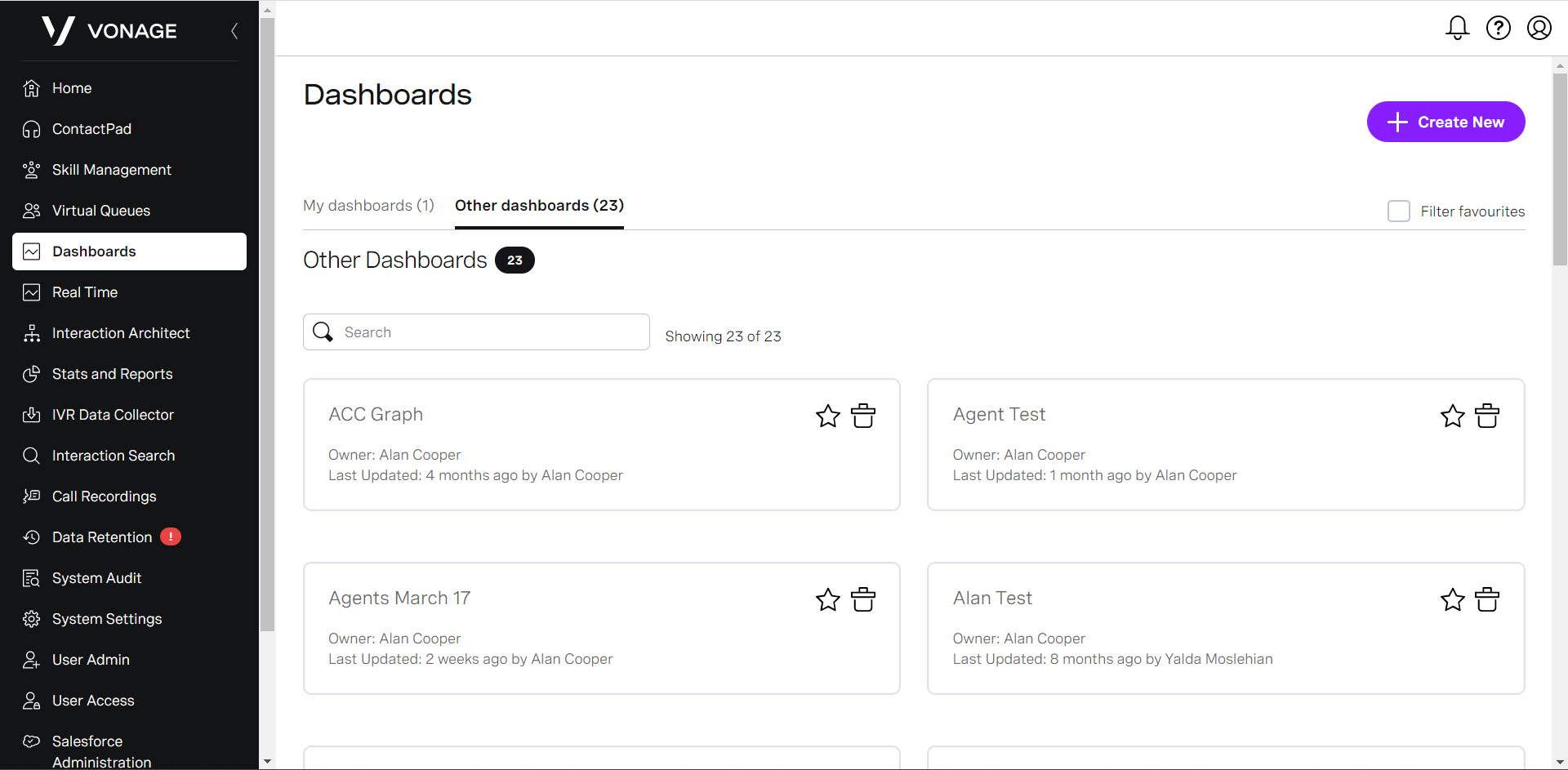
Vonage stands out for its deep customization options. It offers a wide range of APIs to let organizations tailor their phone system and integrate it with other applications. Despite this technical power, Vonage is known to be easy to set up – one user noted the app is intuitive and “didn’t require any training” to get started. This makes it appealing for companies that want both flexibility and simplicity.
- Unlimited domestic calling: Make unlimited calls anywhere in the U.S.
- Phone number porting: Keep your existing business number when you switch to Vonage.
- VBC Admin Portal: A single dashboard to manage your account, users, phones, and settings.
Vonage offers three main pricing tiers (per line, per month).
The Mobile plan is $13.99, and it includes unlimited U.S. calls, SMS/MMS, voicemail, and one main local number.
The Premium plan is $20.99 and adds unlimited video meetings (up to 200 participants), team messaging, and access to Vonage’s app center.
The Advanced plan runs $27.99 and adds on-demand call recording, visual voicemail, and call group features. All plans support monthly or annual billing.
Vonage’s key advantage is the high degree of customization and a competitive feature set. However, some features like call recording or visual voicemail only come in the higher plans. Its call quality is generally good, though support experiences can vary compared to Nextiva. Vonage is best suited for businesses that need custom communication solutions or deep integrations with other software.
Ooma: Best Budget-Friendly RingCentral Alternative
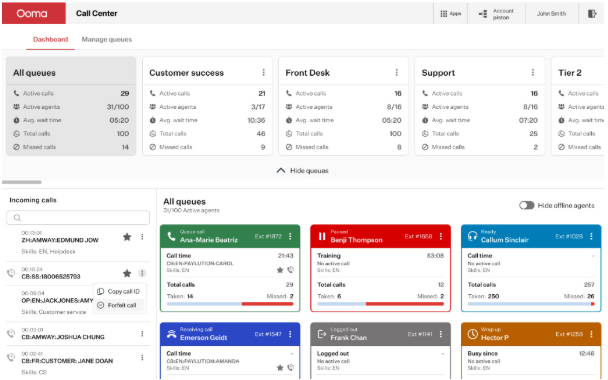
Ooma is a VoIP phone service aimed at budget-conscious small businesses. It provides all the core features needed to start, without overwhelming users with extras. For example, Ooma includes basic CRM integrations and hot-desking (turning any phone into your business phone for the day), plus standard call management like call routing. This makes setup straightforward and cost-effective for small teams.
- Call queuing: Automatically hold and route incoming calls to the next available agent or extension.
- Salesforce integration: Place and receive calls right within Salesforce CRM.
- Hot desking: Dynamically assign phones to employees, so an unassigned handset can become your business line when you need it.
Ooma’s pricing is also very transparent. Plans are per user, per month (plus taxes and fees) with add-ons available.
The Ooma Office Essentials plan is $19.95 and includes a virtual receptionist, extension dialing, music on hold, ring groups, and a mobile app.
The Ooma Office Pro plan is $24.95 and adds features like call recording, text messaging, video conferencing, and a desktop app.
The top Ooma Office Pro Plus plan is $29.95 and includes full call center features: team chat, queueing, voicemail transcription, hot desking, and CRM integrations.
Ooma’s strengths are its low cost and ease of setup. Its basic features are included from the start. On the flip side, lower-tier plans have fewer integrations, and truly unlimited calling requires the Pro Plus plan. Ooma tends to be less feature-rich than competitors like Nextiva or RingCentral. In short, Ooma is a great fit for small businesses that want reliable, affordable phone service without a lot of bells and whistles.
Aircall: Best Alternative for Call Center Analytics
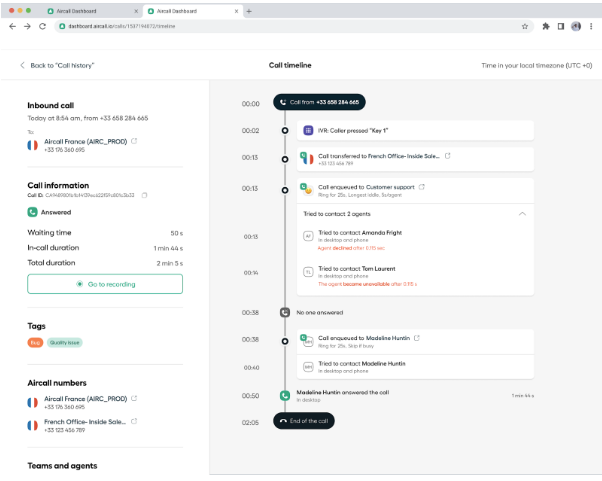
Aircall is a cloud-based call center platform built for small to mid-sized teams. It delivers essential telephony features (like call queuing) and strong analytics to support efficient customer and sales teams. Users love Aircall for its data analytics – you can drill down into call metrics by agent or team to identify trends and improve performance. Aircall also integrates tightly with CRMs (especially HubSpot), so your team can call contacts directly from their CRM interface.
- Power dialer & voicemail drop: Automatically dial through lists and drop pre-recorded voicemails for quick follow-ups.
- Mandatory call tagging: Agents tag calls as they finish, helping organize and analyze call data more effectively.
- Advanced analytics & monitoring: In-depth call metrics and live monitoring (whisper barging) help managers coach teams and track key metrics.
- AI Conversation Intelligence: Aircall’s AI transcribes calls, summarizes conversations, and highlights sentiment so you can uncover insights from each call.
Aircall’s plans are per user, billed annually, with a 3-user minimum.
The Essentials plan is $30 per user and includes unlimited US & Canada calling with essential telephony features and 100+ integrations.
The Professional plan is $50 per user and adds custom onboarding, an SLA, and developer API support for growing teams. Larger enterprises can request a custom plan with advanced support and features. (All plans include global numbers and add-ons like call whispering.)
Aircall excels in call center workflows and provides rich analytics and CRM integrations. However, the 3-user minimum means small teams pay for more seats, and pricing can be high for very small businesses. Aircall is less focused on general unified communications (it lacks built-in team chat and video). In summary, Aircall is ideal for sales or support teams and businesses that rely heavily on CRM-integrated calling and want deep call analytics.
Dialpad: Best Alternative for AI-Powered Insights
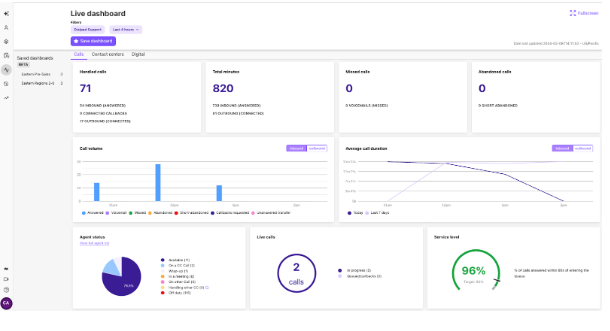
Dialpad is a modern, AI-driven contact center solution with attractive pricing. It emphasizes AI features – for example, it offers live transcription of calls and voicemails and real-time sentiment analysis. The platform’s interface is sleek and easy to use. One standout feature is organizing calls by team and tracking callbacks with the help of its voice AI capabilities.
- AI call & voicemail transcription: All calls and voicemails are automatically transcribed, so you can quickly review or share conversations.
- Workspace integrations: Dialpad connects with Google Workspace and Microsoft 365 to sync contacts, calendars, and other data seamlessly.
- Real-time analytics & reporting: Get live call performance metrics and reports to monitor your team’s activity and productivity.
Dialpad’s pricing is per user, billed annually.
The Standard plan is $15 per user and includes unlimited US/Canada calling, AI meetings, SMS/MMS, and AI-powered transcripts (with web/chat support).
The Pro plan is $25 per user and adds 24/7 live support, CRM integrations, open APIs, and ring groups.
Enterprise plans (custom pricing) unlock advanced features like unlimited ring groups and extended data retention. (Note: Some advanced AI features like sentiment analysis may incur extra usage costs.
Dialpad’s pros include innovative AI tools, a modern UI, and competitive pricing for smaller teams. On the downside, certain AI functions are limited on lower plans or require add-ons, and video conferencing participant counts are capped at lower tiers. Dialpad is best suited for teams that prioritize real-time AI insights, transcriptions, and a modern user experience.
Grasshopper: Best Alternative for Solopreneurs and Small Teams
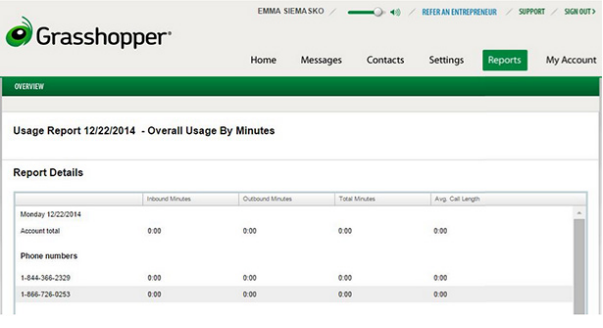
Grasshopper is a simple virtual phone system designed for solopreneurs and very small businesses. It avoids complexity by offering just the basics needed for a business number – features like virtual phone numbers, call forwarding, and voicemail-to-email. Users often note how easy it is: one user reported that Grasshopper was very user-friendly and rarely required contacting support for help. This makes it ideal for entrepreneurs who want a phone solution that “just works” out of the box.
- Call forwarding: Route any business call to your personal phone (or any other number) so you never miss a call.
- Voicemail: Set up a business voicemail and get recordings sent to your email.
- Call reporting: Simple call logs and reports let you track your incoming calls and see basic usage stats.
Grasshopper’s pricing is based on phone numbers and extensions (not per user).
The True Solo plan is $14 per month (billed annually) and includes 1 phone number with unlimited extensions (for one user), plus single-number forwarding and voicemail.
The Solo plan is $25 per month and adds unlimited users on 1 number, with multiple forwarding numbers and per-user permissions.
The Small Business plan is $55 per month, which includes unlimited users, 4 phone numbers, and more forwarding flexibility.
Pros: Grasshopper is very affordable and simple to set up, making it great for solo business owners.
Cons: It lacks many features of full VoIP systems – no video conferencing, no team chat – and it requires an existing phone line for forwarding (it’s not a standalone VoIP handset). Grasshopper is best for freelancers, consultants, and micro-businesses that only need a basic virtual business number and simple forwarding.
Zoom Phone: Best Alternative for Integrated Voice and Video
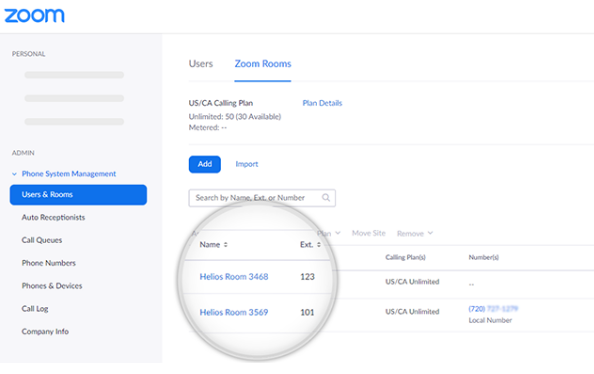
Zoom Phone brings Zoom’s popular video conferencing into your phone system. It creates a unified experience where users can switch seamlessly between voice calls, video meetings, and messaging in the Zoom app. This is especially valuable for businesses already using Zoom – everything works within the same familiar interface. Zoom Phone also has extensive international coverage (47+ countries) and offers local and toll-free numbers worldwide, making it a smart choice for companies with global teams or clients.
- Meeting elevation: Instantly upgrade any voice call to a Zoom video meeting with one click.
- Centralized administration: Admins manage phone, video, and chat settings from a single dashboard.
- Intelligent call routing: Build custom call flows with auto-attendants, call queues, and IVR menus to direct callers efficiently.
- Advanced analytics: Gain detailed reports on call quality, usage patterns, and user adoption to monitor your communications.
- Emergency calling: Enhanced 911 support sends accurate location info for emergency responders.
Zoom Phone plans (per user, per month, annually) start at $10 for the Metered plan, which includes metered domestic calling, voicemail transcription, and call recording.
The Regional Unlimited plan is $15 and adds unlimited domestic calling, post-call summaries, and unlimited IVR minutes.
The top Global Select plan is $20 and adds advanced compliance features and queue analytics for regulated industries. Note that all Zoom Phone plans require a base Zoom Meetings (or unified communications) license.
Zoom Phone’s biggest advantage is its seamless integration with Zoom Meetings and an intuitive, consistent interface. Call quality is generally excellent. Its downsides are that you must already be paying for Zoom, and it lacks some specialized call-center features that dedicated providers have.
In short, Zoom Phone is ideal for businesses heavily invested in Zoom who want to add robust business calling to their existing Zoom environment.
RingCentral alternatives comparison
| Provider | Best For | Key Features | Strengths | Limitations |
|---|---|---|---|---|
| SuperU | Businesses replacing legacy IVRs with natural AI voice agents | AI-powered phone agents, real-time conversation, contextual memory, multilingual, 24/7 availability | Handles calls like a human, no button-press menus, fast setup, remembers past interactions | Not a traditional phone system designed specifically to replace IVR workflows |
| Nextiva | Businesses needing a full unified communications platform | Voice, video, SMS, team chat, customer experience tools, CRM integrations, 24/7 support | Industry-leading reliability (99.999% uptime), all-in-one solution, top-rated support | Most advanced features available only in higher-tier plans |
| Vonage | Companies needing flexible, API-based communications | Voice and SMS APIs, mobile/desktop apps, video meetings, admin portal | High customization, easy setup, great for developers | Some features like call recording only in premium tiers |
| Ooma | Budget-conscious small businesses | Call queuing, hot desking, basic CRM integrations, virtual receptionist | Easy setup, reliable, includes core calling features from the start | Fewer integrations, fewer advanced features on basic plans |
| Aircall | Sales/support teams focused on analytics and CRM integration | Power dialer, voicemail drop, real-time call analytics, AI conversation intelligence | Excellent call center analytics, tight CRM integration, supports call monitoring and coaching | 3-user minimum; pricing may be high for small businesses |
| Dialpad | Businesses looking for AI-powered voice insights | Live call transcription, voicemail transcription, sentiment analysis, analytics, integrations with Workspace/365 | Sleek UI, real-time AI summaries, excellent transcription and reporting tools | Some AI tools require higher tiers or usage limits |
| Grasshopper | Solopreneurs and micro-businesses needing a virtual line | Call forwarding, voicemail-to-email, custom greetings, basic reporting | Very simple to set up, doesn’t require new hardware, works with personal phone | Lacks video, team chat, and advanced call features |
| Zoom Phone | Teams already using Zoom for meetings | Voice calling, seamless voice-video switch, call routing, centralized admin, global coverage | Unified Zoom experience, familiar interface, solid international support | Requires a Zoom base license; fewer call center features |
Five-step migration checklist
- Export every user, call log, and greeting file from RingCentral, then secure them in a shared drive for reference.
- Collect recent invoices and unlock each phone number, because correct paperwork prevents porting delays.
- Activate free trials for at least two shortlisted providers and test call quality concurrently during regular business hours.
- Re-create auto attendants, hunt groups, and after-hours rules inside the new dashboard, validating each path with internal test calls before customers dial in.
Schedule the final port during an evening lull, then train staff on desktop and mobile apps the next morning to minimize confusion.
FAQs
1. Is RingCentral free?
The platform offers only a 15-day trial and has no permanent free tier
2. What are credible alternatives to RingCentral with transparent prices?
Zoom Phone at $10, Dialpad at $15, and Ooma Office at $19.95 lead the field for clarity and value
3. Can I keep my existing toll-free number when switching?
Yes, the FCC mandates portability, and every provider listed supports streamlined number ports within seven to ten business days.
4. How long does migration usually take?
Small teams moving fewer than twenty numbers normally finish within two weeks, provided documents and scheduling align smoothly with carrier windows.
5. Will recordings move over?
Download them from RingCentral first, then upload WAV or MP3 files to the new system’s voicemail or archive module.
Test SuperU’s AI voice agent free for thirty days and watch routine calls resolve themselves effortlessly.
Start for Free – Create Your First Voice Agent in Minutes


